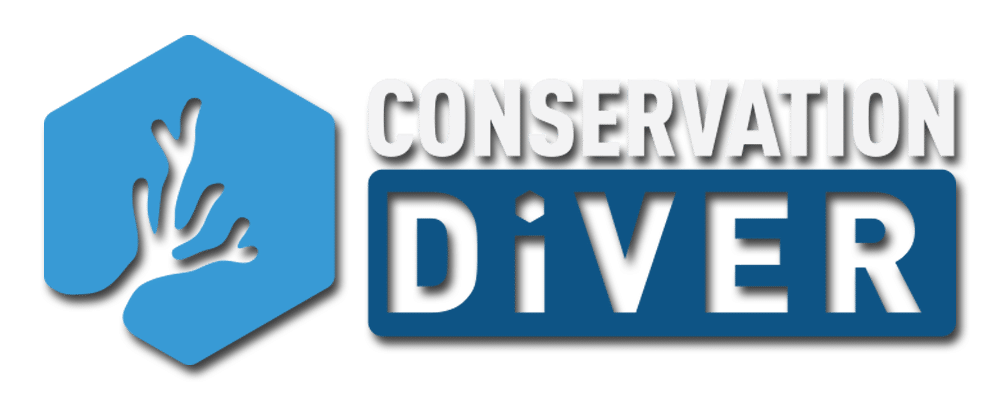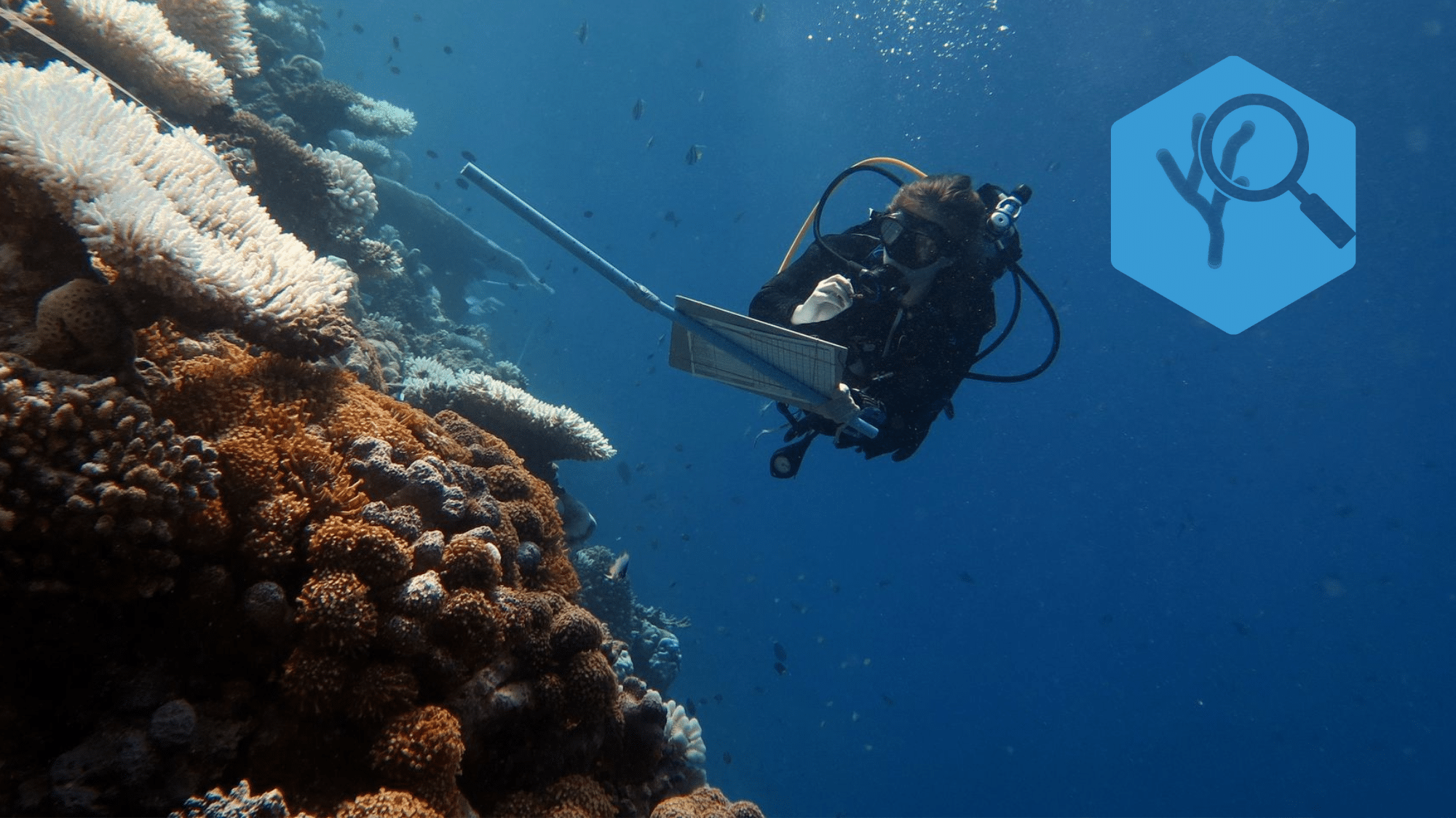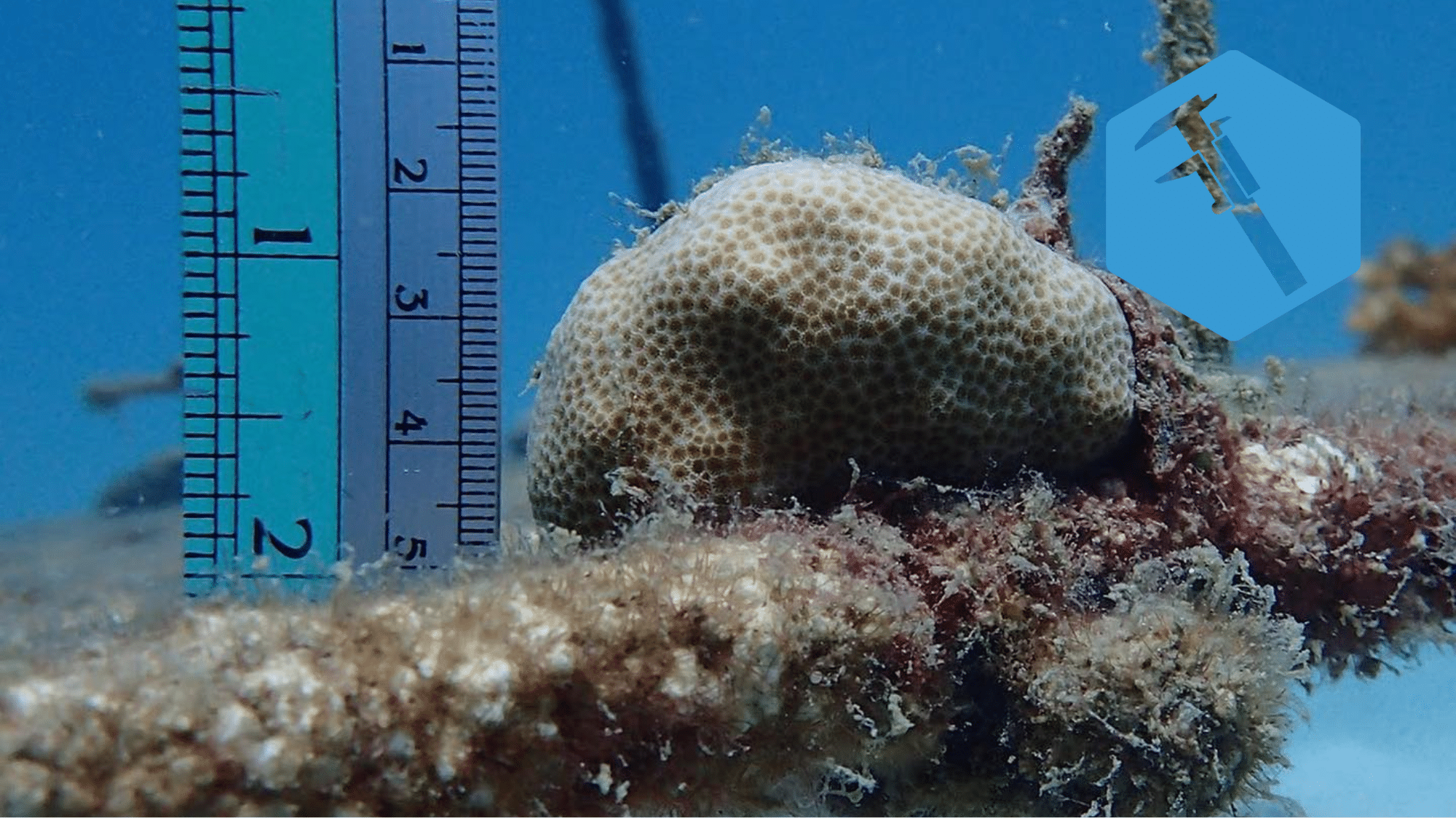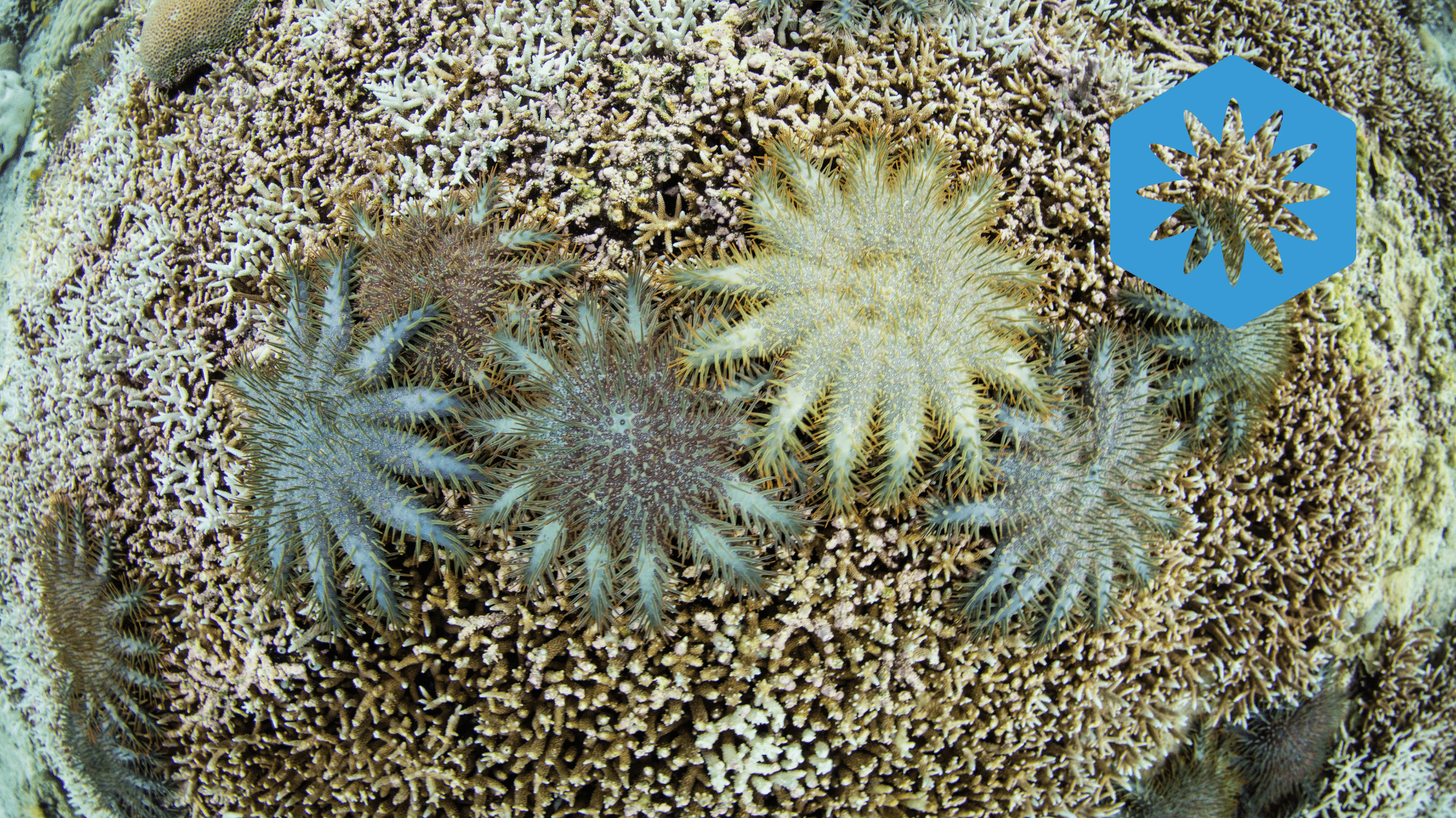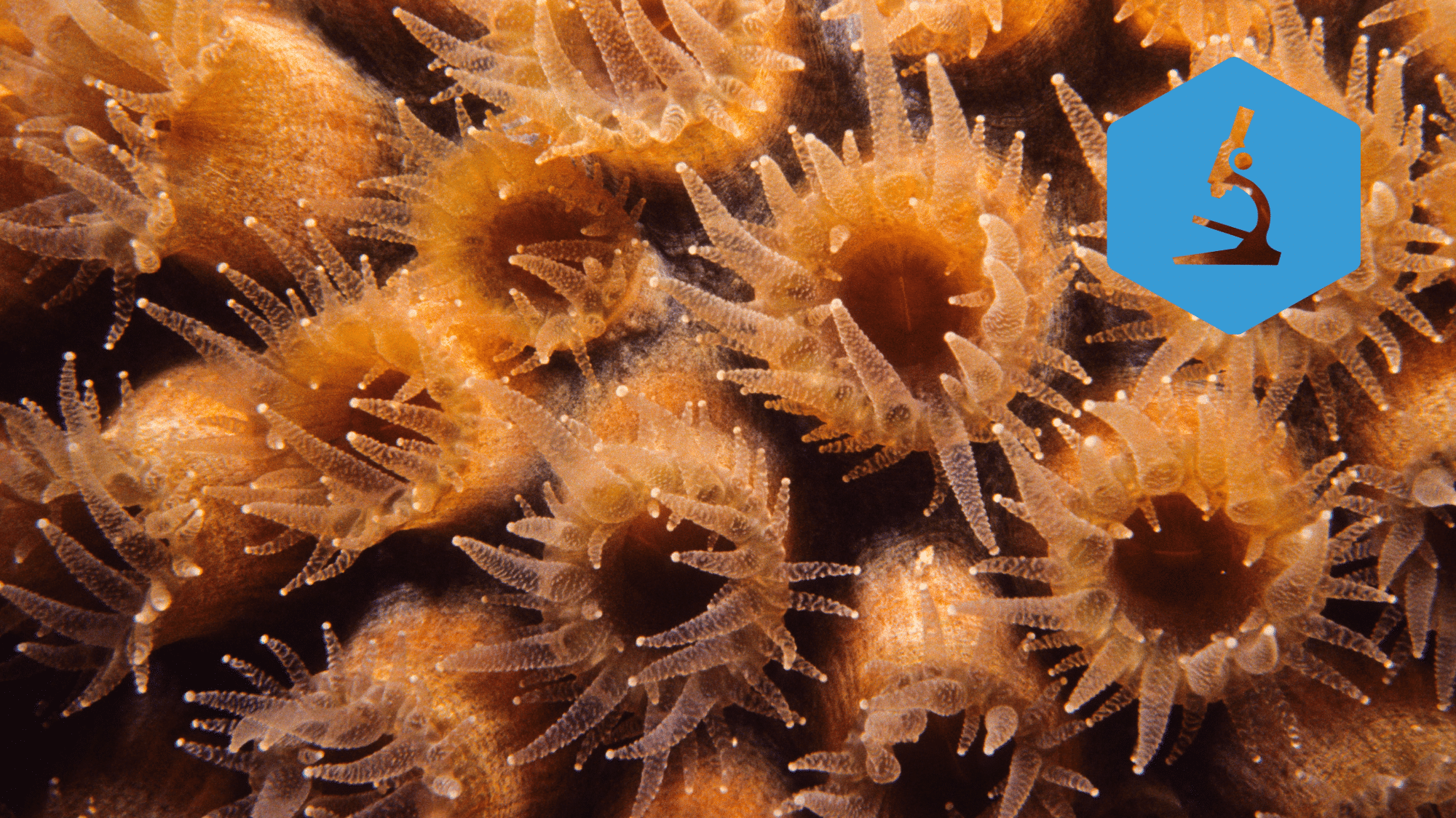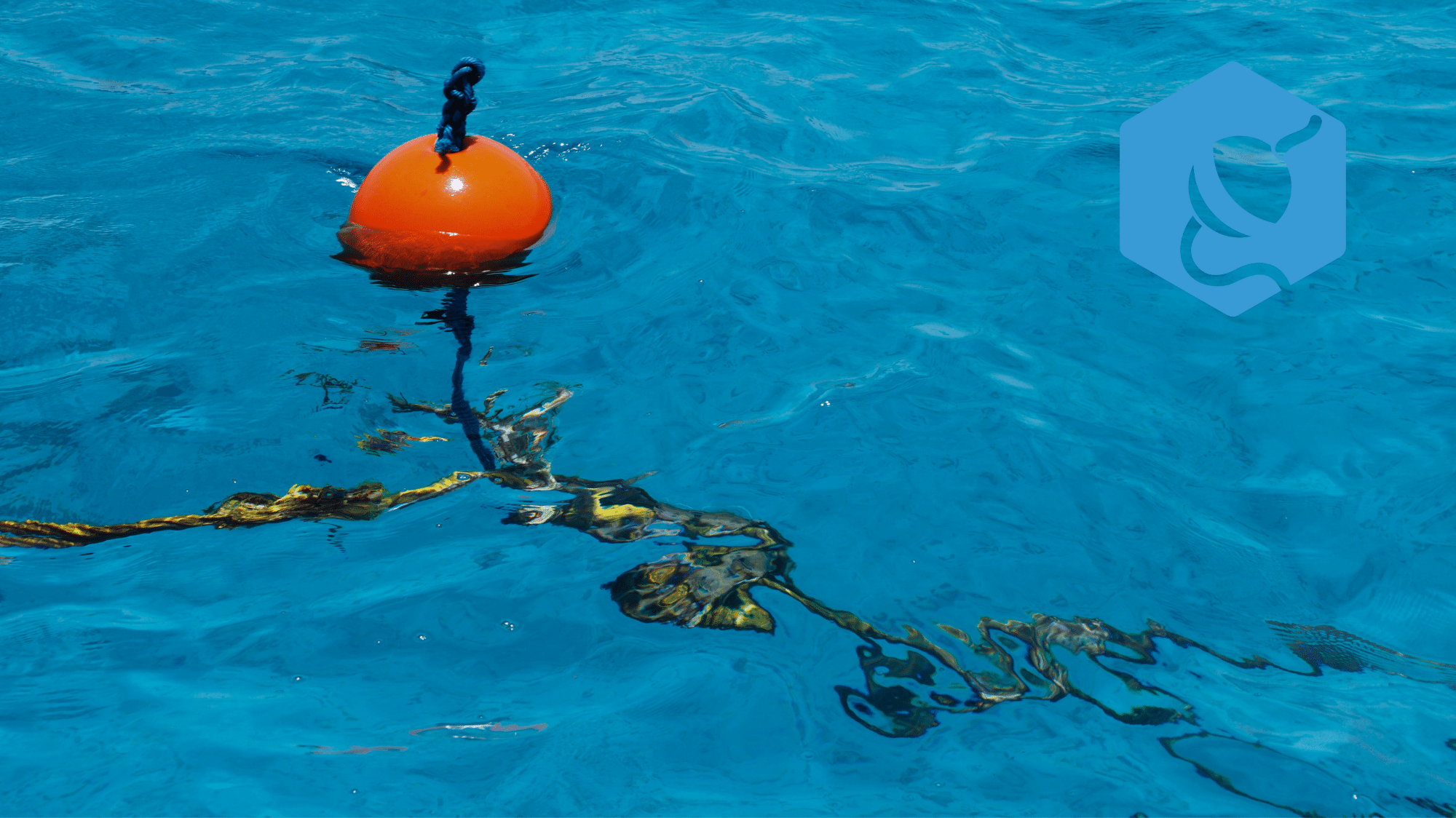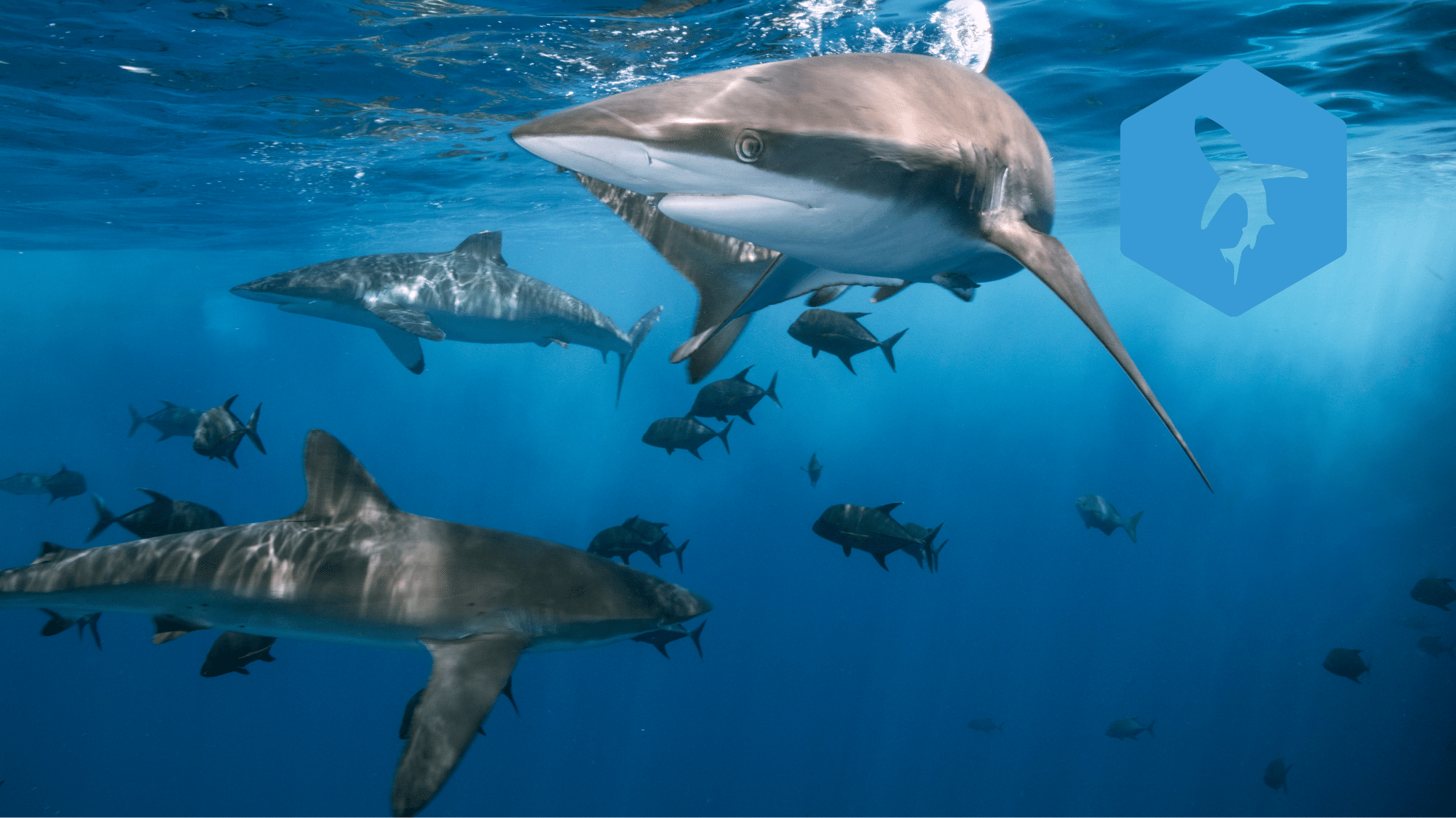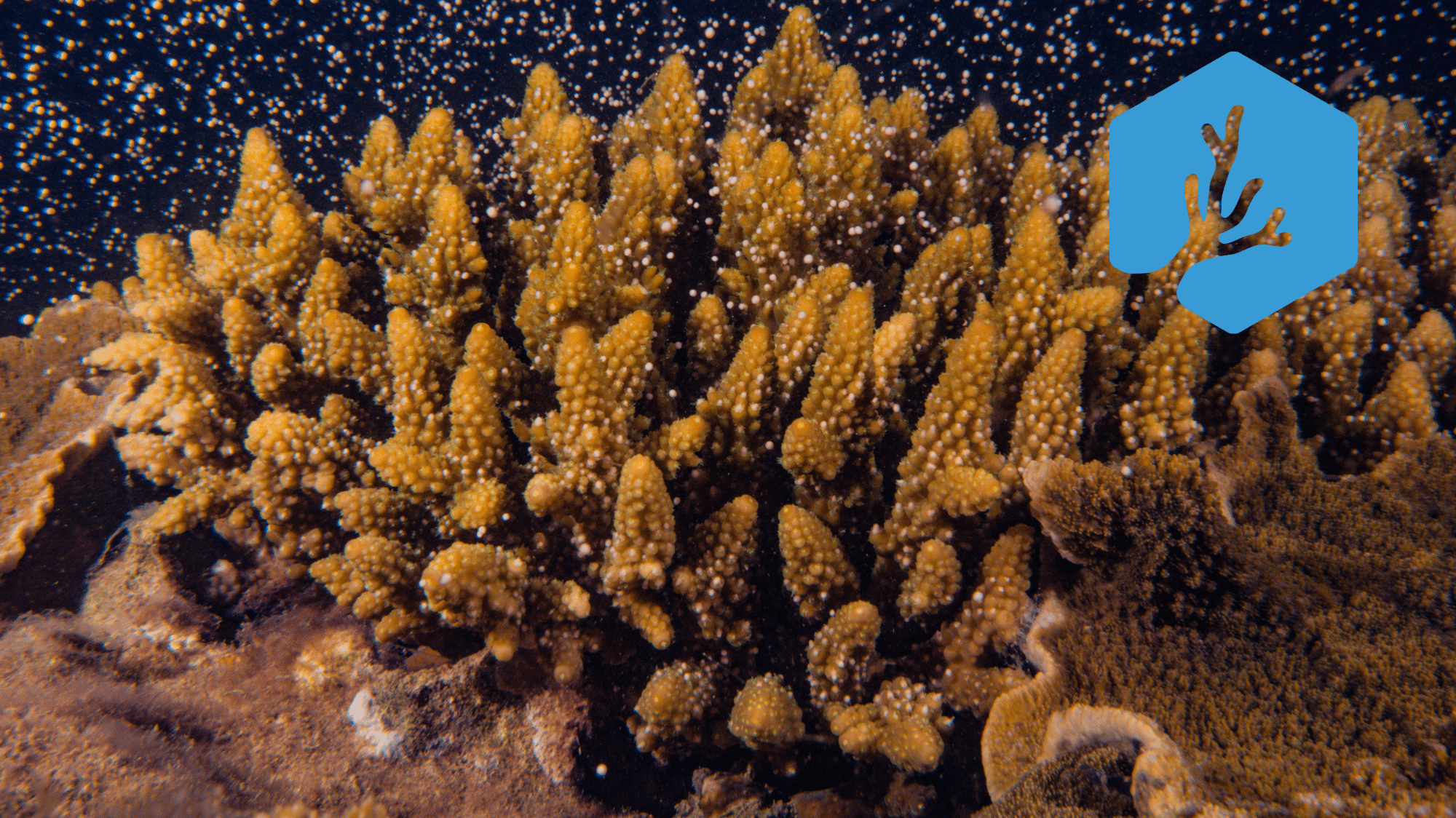Coral Diseases & Compromised Health Monitoring
Coral Diseases & Compromised Health Monitoring
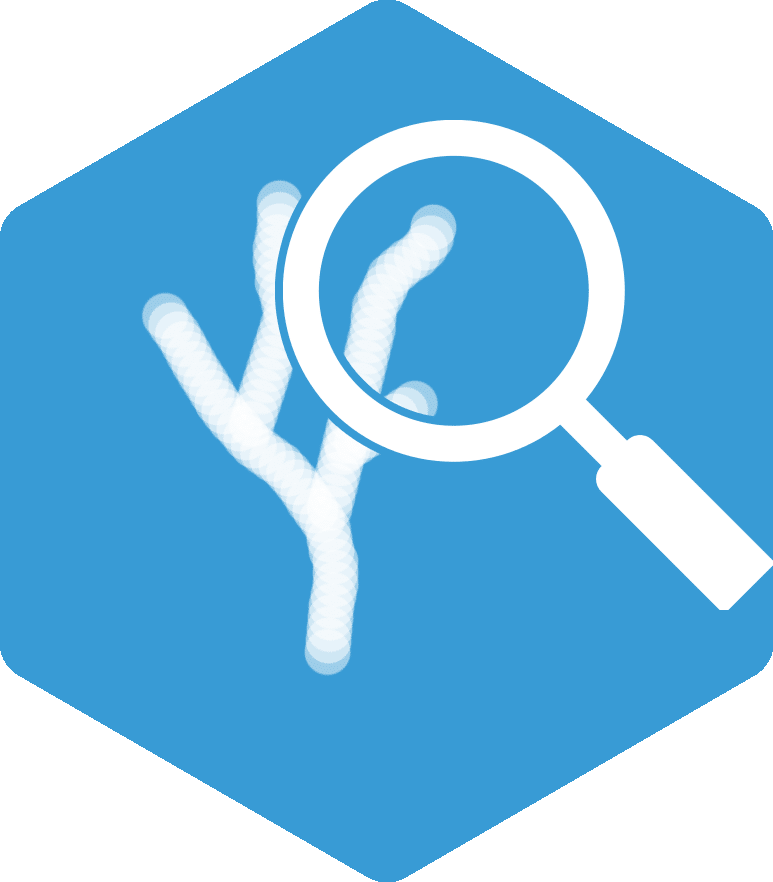
The Coral Disease & Compromised Coral Health Monitoring course is a prestigious certification card for those students who are able to complete all aspects of our Ecological Monitoring Program, and Coral Taxonomy and Identification in theory and practice. When performed to a high level of proficiency, coral health assessment can be incorporated into the surveys. This card recognizes your ability to identify all states of coral health, and contribute to coral disease and overgrowth monitoring, and research.
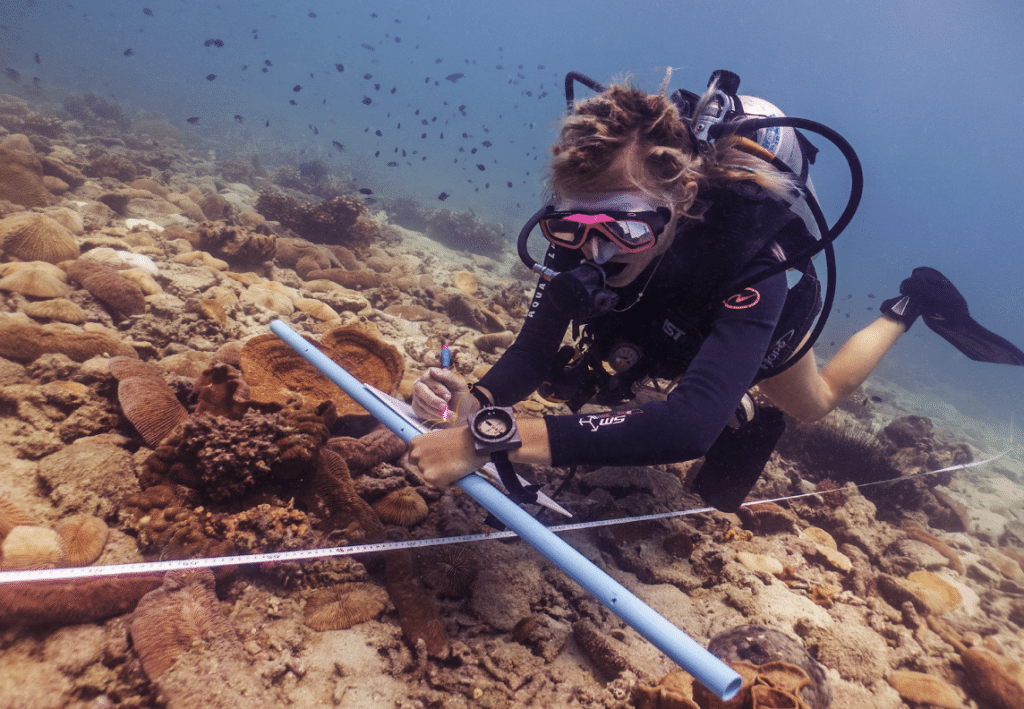


Prerequisites
- Be 12 years of age or older
- Be certified as an Advanced diver under a leading diving organization (PADI, SSI, RAID, etc) or an Open Water diver who has satisfactorily completed a buoyancy appraisal with a professional diver
- Demonstrate proper diving ability at an advanced Level and be proficient in buoyancy and self-awareness
- Be certified in our Ecological Monitoring Program
- Be certified in our Coral taxonomy & Identification course
Standards
- Understand how predation,
competition, and parasitism play a role in the structure and population
dynamics of the coral reefs - Be Proficient in various survey
techniques used by reef managers to monitor the health of coral reef ecosystems - Be able to identify various
common coral disease of the region - Be familiar with, and able to
identify common causes of coral mortality or compromised health states
Requirements
- Attend the Compromised Coral
Health Assessment and Monitoring lecture and any related knowledge building
sessions - Read and complete the chapter
reviews for the Coral Disease and Coral Bleaching Chapter of the Ecological Monitoring
Manual - Complete and pass all the
written exams for the courses listed above (80% and above) - Complete and pass the written
exam for the Compromised Coral Health and Monitoring course - Successfully perform at least
one Coral Disease and Comprised Health Monitoring Survey - Complete data entry, in the
form of hard copy data sheets or the online database, as required
Approximate course time is 8 hours, with at least 1 dive
Certification Card
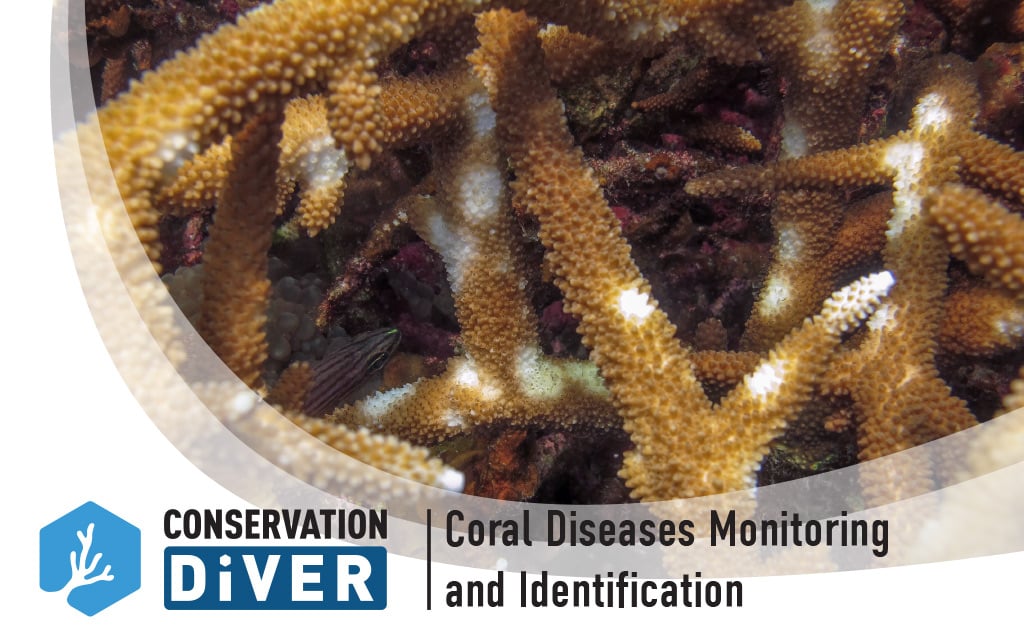
Training Centers
- Indonesia - Blue Marlin Conservation
- Thailand - ATMEC
- Thailand - Black Turtle Conservation
- Thailand - NHRCP
Advanced Ecological Monitoring Program
Advanced Ecological Monitoring Program

The Advanced Ecological Monitoring Program certification is a prestigious certification course for students seeking to gain knowledge and practice in a multitude of research techniques and demonstrate exceptional skill in performing reef surveys and data collection. This certification recognizes your commitment to coral reef monitoring and research and takes several weeks to achieve.

Prerequisites
- Be 12 years of age or older
- Be certified as an Advanced diver under a leading diving organization (PADI, SSI, RAID, etc) or an Open Water diver who has satisfactorily completed a buoyancy appraisal with a professional diver
- Demonstrate proper diving ability at an advanced Level and be proficient in buoyancy and self-awareness
- Complete our Ecological Monitoring Program (EMP) certification
- Complete our Coral Taxonomy & Identification certification
- Complete our Coral Diseases & Compromised Health Monitoring certification or a similarly advanced monitoring course
- Complete at least 3 of the following seven other research certifications
- Giant Clam Nurseries & Population Studies
- Seahorse Ecology & Monitoring
- Nudibranch Ecology & ID Course
- Coral Predators: Population Monitoring & Management
- Shark Ecology & Population Studies
- Sea Turtle Ecology & Monitoring
- Marine Plastic Pollution: Monitoring & Assessment
- Macro Algae Monitoring
- Seagrass Ecology & Monitoring
Standards
- Learn and practice a variety of marine research techniques, including but not limited to; water quality testing, fragment/recruitment surveys, coral size class surveys, reef surveys using a quadrant, photo documentation, underwater photogrammetry, tracking growth rates, monitoring coral health, and more
- Successfully conducted various survey techniques and data collection protocols
- Enter data into our existing databases and understand how that data in analyzed and reported
Requirements
- Attend all knowledge
development presentations included in the courses listed above as well as the
Advanced Ecological Monitoring Program lecture - Read and complete the chapter
reviews for chapters 9-10 of the Ecological Monitoring Program manual - Complete and pass all the
written exams for the courses listed above (80% and above) - Perform at least one
Compromised Coral Health survey or Coral Bleaching Survey
Certification Card
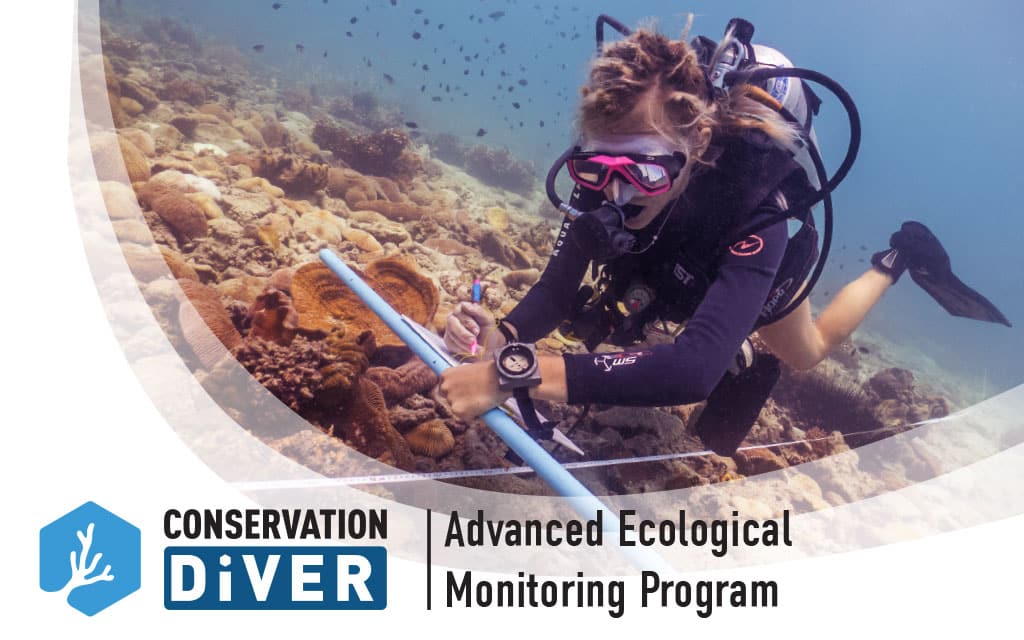
Training Centers
- Hawai'i - Ocean Alliance Project
- Indonesia - Blue Marlin Conservation
- Indonesia - Gili Eco Trust
- Thailand - Black Turtle Dive
- Thailand - NHRCP
Published papers and reports derived through the teaching of this course
- Recruitment of hard coral communities on giant clam shells (Cardiidae: Tridacna) differ from surrounding reef habitats at a tourist destination in the Gulf of Thailand
Rahul Mehrotra, Alyssa Allchurch, Coline Monchanin, Chad M Scott - Citizen science reveals the population structure and seasonal presence of whale sharks in the Gulf of Thailand
Kirsty Magson, Emily Monacella, Chad Scott, Noémie Buffat, Sirachai Arunrugstichai, Metavee Chuangcharoendee, Simon J Pierce, Jason Holmberg, Gonzalo Araujo - Population dynamics of corallivores (Drupella and Acanthaster) on coral reefs of Koh Tao, a diving destination in the Gulf of Thailand by Chad M. Scott, Rahul Mehrotra, Margaux Y. Hein, Michelangelo S. Moerland, and Bert W. Hoeksema
- Rare zooxanthellate Nanipora octocoral (Helioporacea) in the Gulf of Thailand by Pau Urgell Plaza, Rahul Mehrotra, Chad M. Scott and James Davis Reimer
- Changes in hard coral abundance and composition on Koh Tao, Thailand, 2006-2014 by Chad M. Scott, Rahul Mehrotra, Madalena Cabral and Sirachai Arunrugstichai
- An update to the list of coral reef fishes from Koh Tao, Gulf of Thailand by Patrick Scaps and Chad M. Scott
- Incident Report and Restoration Overview: Boat Grounding, Chalok Ban Kao Reef, January 2017 2015. by Chad Scott, Spencer Arnold, Elouise Haskin, Kirsty Magson, Rahul Mehrotra, Joel Rorher, Pau Urgell Plaza
Marine Ecology & Monitoring
Marine Ecology & Monitoring
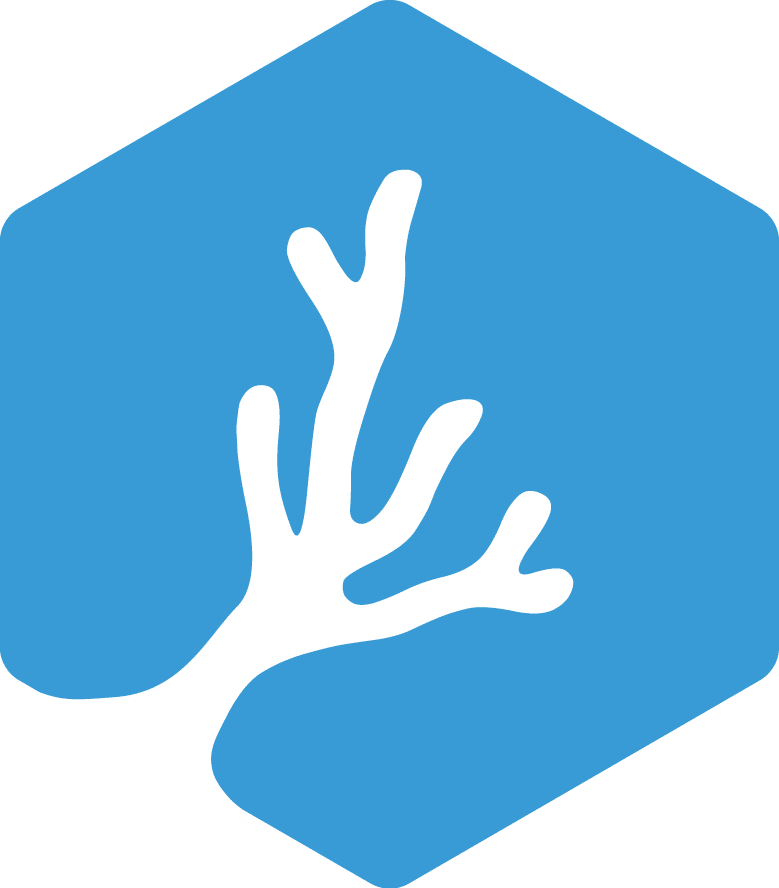
The Marine Ecology & Monitoring Course is a partial fulfilment of the full Ecological Monitoring Program (EMP), for students who do not have time to complete all 5 lectures and 4 dives of the EMP. It is designed to give students an introduction to marine ecology and how to view the reef scientifically by assessing key biotic and abiotic components on the marine environment. The course teaches students how to use real world scientific sampling and survey techniques and certifies them to conduct their own surveys and report data back to the online database. Students receiving this certification are welcome to return at a later date and complete the full EMP course.



Prerequisites
- Be 12 years of age or older
- Be certified as an Advanced diver under a leading diving organization (PADI, SSI, RAID, etc) or an Open Water diver who has satisfactorily completed a buoyancy appraisal with a professional diver
- Demonstrate proper diving ability at an advanced Level and be proficient in buoyancy and self-awareness
Standards
- Understand more about marine ecology and threats to coastal ecosystems.
- Understand various survey techniques used by reef and marine resources managers to monitor coastal ecosystems
- Learn the techniques and diagnostic features for identifying marine invertebrates along a permanent transect line
- Or the techniques and diagnostic features for identifying fishes and other vertebrates along a permanent transect line or
- Or how to assess substrate types and composition and, in locations where it applicable hard coral coverage/growth forms, using the point-intercept technique
Requirements
- Attend the Intro to Marine Ecology Lecture, plus at least one other survey lecture (Marine Invertebrates, Fish, or Substrate)
- Perform at least one of the three EMP surveys (marine invertebrates, fish, or substrate)
Expected course time: minimum 4 hours, minimum of 1 dive.
Certification Card
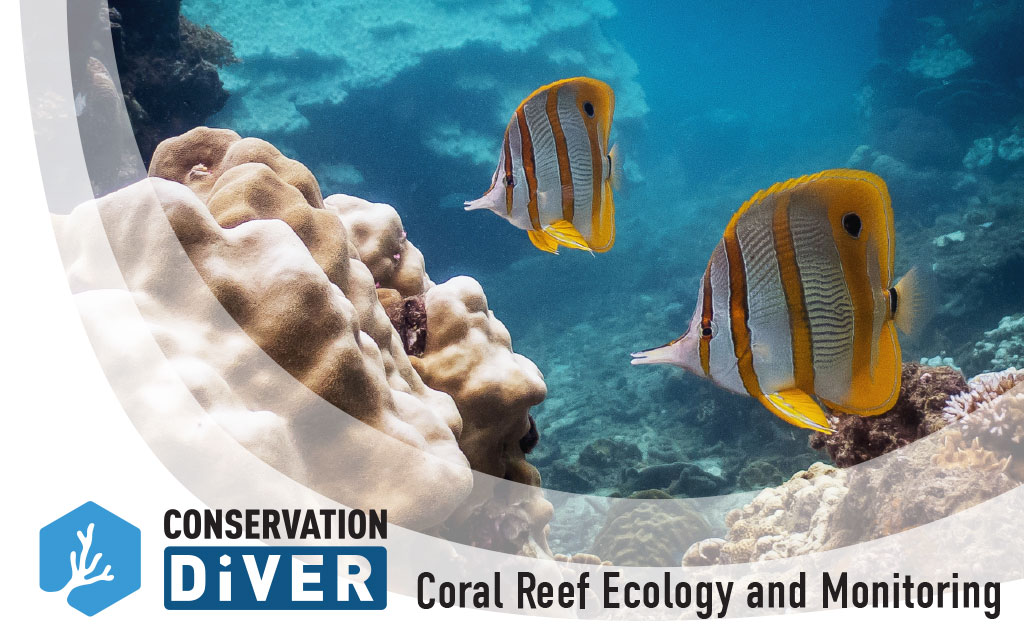
Training Centers
- Hawai'i - Ocean Alliance Project
- Madagascar - MRCI
- Mallorca - Albatros Diving
- Indonesia - Bali Conservation Diving
- Indonesia - Blue Marlin Conservation
- Indonesia - Gili Eco Trust
- Indonesia - Gili Shark Conservation
- Thailand - ATMEC
- Thailand - Black Turtle Conservation
- Thailand - NHRCP
- Thailand - The Adventure Club
Coral Predators Monitoring & Monitoring
Coral Predators Monitoring & Management

The Coral Predators Monitoring and Management Course is designed to give students an introduction to the impacts of over-populations or outbreaks of coral predators such as the Crown of Thorns starfish and Drupella Snails. The course teaches students about the causes and effects of imbalances in the reef ecosystem, and gives them the knowledge and skills to monitor and assess coral predator populations. In addition to learning about ways to address the root of the problem, students will also learn how to safely and effectively manage populations of coral predators to increase reef resilience, decrease mortality following bleaching events, and be proactive in managing coral reef areas for future sustainability .




Prerequisites
- Be 12 years of age or older
- Be certified as an Advanced diver under a leading diving organization (PADI, SSI, RAID, etc) or an Open Water diver who has satisfactorily completed a buoyancy appraisal with a professional diver
- Demonstrate proper diving ability at an advanced Level and be proficient in buoyancy and self-awareness
- Be certified in our Ecological Monitoring Program
Standards
- Understand the role coral predators play in the ecosystem
- Understand current theory on population dynamics of coral predators in stressed reef ecosystems
- Learn about the root causes of coral predator population outbreaks
- Understand the life-history and reproductive strategies of organisms such as Drupella Snails and Crown of Thorns Starfish
- Learn how to safely and effectively manage populations of coral predators
- Practice assessing coral predator abundance and managing populations
Requirements
- Attend the lecture on coral predators
- Perform a coral predator population survey
- If research suggests a local outbreak then perform a predator management and removal dive
Expected course time about 6 hours
Certification Card
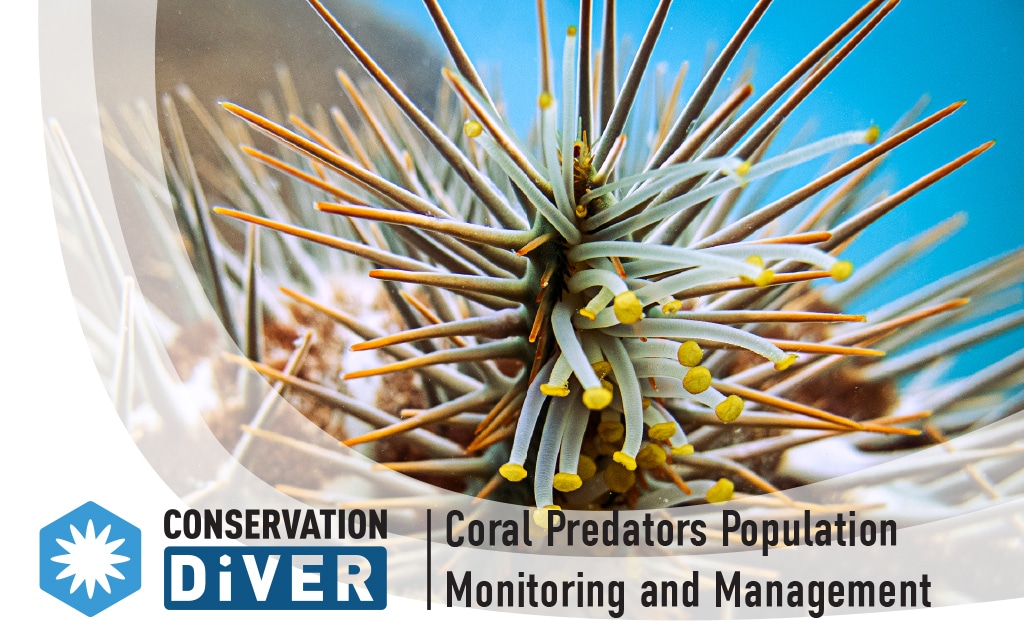
Training Centers
Published Papers and reports Related to this course
- Population dynamics of corallivores (Drupella and Acanthaster) on coral reefs of Koh Tao, a diving destination in the Gulf of Thailand by Chad M. Scott, Rahul Mehrotra, Margaux Y. Hein, Michelangelo S. Moerland, and Bert W. Hoeksema
- In-situ egg deposition by corallivorous snails on mushroom corals at Koh Tao (Gulf of Thailand) by Chad M. Scott, Rahul Mehrotra and Bert W. Hoeksema
- Prey selection of corallivorous muricids at Koh Tao (Gulf of Thailand) four years after a major coral bleaching event by Michelangelo S. Moerland, Chad M. Scott and Bert W. Hoeksema
- Spawning observation of Acanthaster planci in the Gulf of Thailand by Chad M. Scott, Rahul Mehrotra and Pau Urgell Plaza
- Dietary shift in corallivorous Drupella snails following a major bleaching event at Koh Tao, Gulf of Thailand by B.W. Hoeksema, C. Scott & J.D. True
Coral Taxonomy & Identification
Coral Taxonomy & Identification

Being able to accurately identify corals by their family and species is vital for any research, monitoring, and restoration courses. It is also a great way to learn more about their evolutionary and life history, and gain a new appreciation and love for their diversity. In this course, you will learn how to identify corals underwater based on their anatomical features, and on land based on their skeletal features. You will also learn tips and tricks to remembering the names and how to ID them underwater. Depending on where you take the course, you will learn the most common species in your area, but have the tools to learn the species wherever you dive next.
Prerequisites
- Be 12 years of age or older
- Be certified as an Advanced diver under a leading diving organization (PADI, SSI, RAID, etc) or an Open Water diver who has satisfactorily completed a buoyancy appraisal with a professional diver
- Demonstrate proper diving ability at an advanced Level and be proficient in buoyancy and self-awareness
- Be certified in our Ecological Monitoring Program
Standards
- Be familiar with coral anatomy and skeletal morphology, in particular, the diagnostic features used in identification
- Understand the taxonomic system and organization for classifying hard corals
- Learn the names of coral families and genera, and tricks to remember the Latin names
Requirements
- Attend 1 Coral Taxonomy and Identification lecture
- Practice identifying corals on land with the EMP book or CoralFinder Guide (By BYO Guides), using specimens
- Perform 1 coral taxonomy identification dive learning how to coral anatomy and skeletal morphology
- Perform 1 survey dive specifically taking data on coral genera - can either be the EMP substrate dive, coral disease survey, or a quadrat survey
- Be able to accurately identify at least 10 of the most common coral genera to the region
- Complete the final quiz
Expected course time about 8 hours
Certification Card
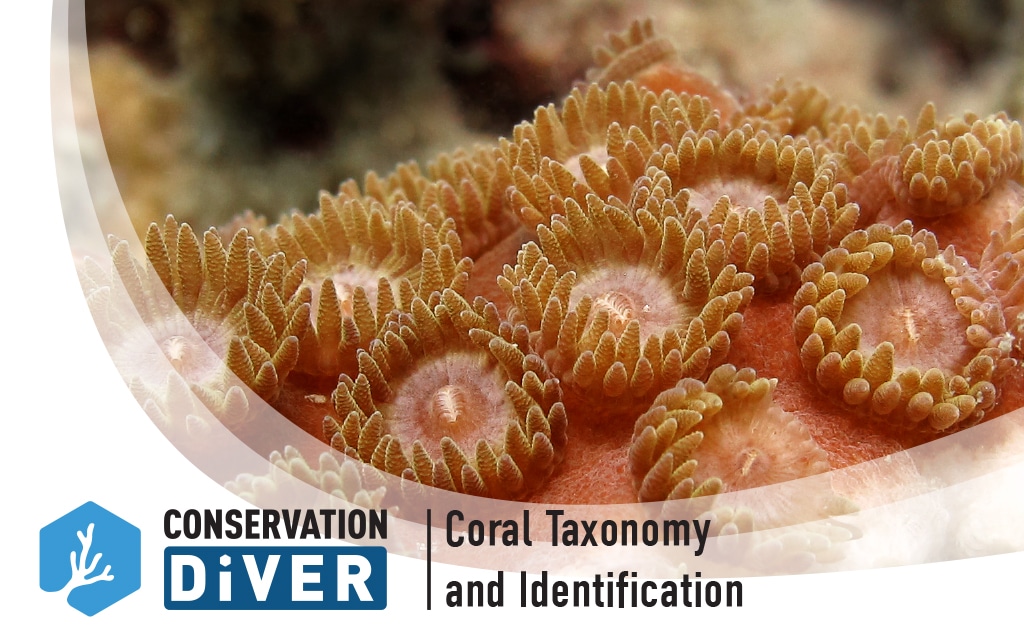
Training Centers
- Hawai'i - Ocean Alliance Project
- Indonesia - Blue Marlin Conservation
- Thailand - ATMEC
- Thailand - Black Turtle Conservation
- Thailand - NHRCP
Mooring Line Maintenance & Installation
Mooring Line Maintenance & Installation

Mooring lines are one of the most simple and effective means to reduce structural damage to coral reefs caused by anchors and boats. Any tourism impacted area should have mooring lines available for use, but they can often be difficult and expensive to install. In this course you will gain a wide range of knowledge on the assembly and installation of effective mooring buoys. After receiving this certification you will have all of the necessary skills needed to maintain or install mooring buoys wherever they are needed.

Prerequisites
- Be 12 years of age or older
- Be certified as an Advanced diver under a leading diving organization (PADI, SSI, RAID, etc) or an Open Water diver who has satisfactorily completed a buoyancy appraisal with a professional diver
- Demonstrate proper diving ability at an advanced Level and be proficient in buoyancy and self-awareness
Standards
- Understand the theories and practicalities of marine zoning and spatial planning
- Learn about the proper selection or construction of mooring lines bases/anchor points
- Understand the various parts of the mooring system, and how to design it for strength and longevity
- Know how to tie eight knots used throughout the installation of mooring lines
- Install/maintain a mooring line system
Requirements
- Attend the Mooring Buoy and Marine Zoning lecture
- Demonstrate the ability to tie all eight knots discussed in the lecture
- Evaluate a mooring buoy and record data on its condition
- Install or maintain a mooring buoy system
Expected course time about 6 hours
Certification Card
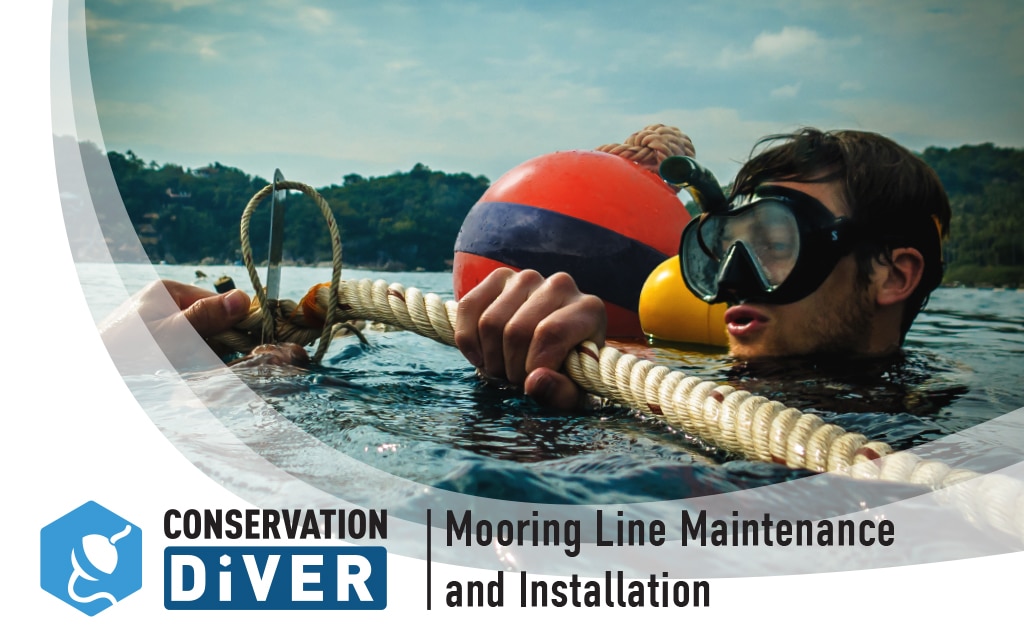
Training Centers
Other Resources
Nudibranch & Sea Slug Ecology
Nudibranch & Sea Slug Ecology
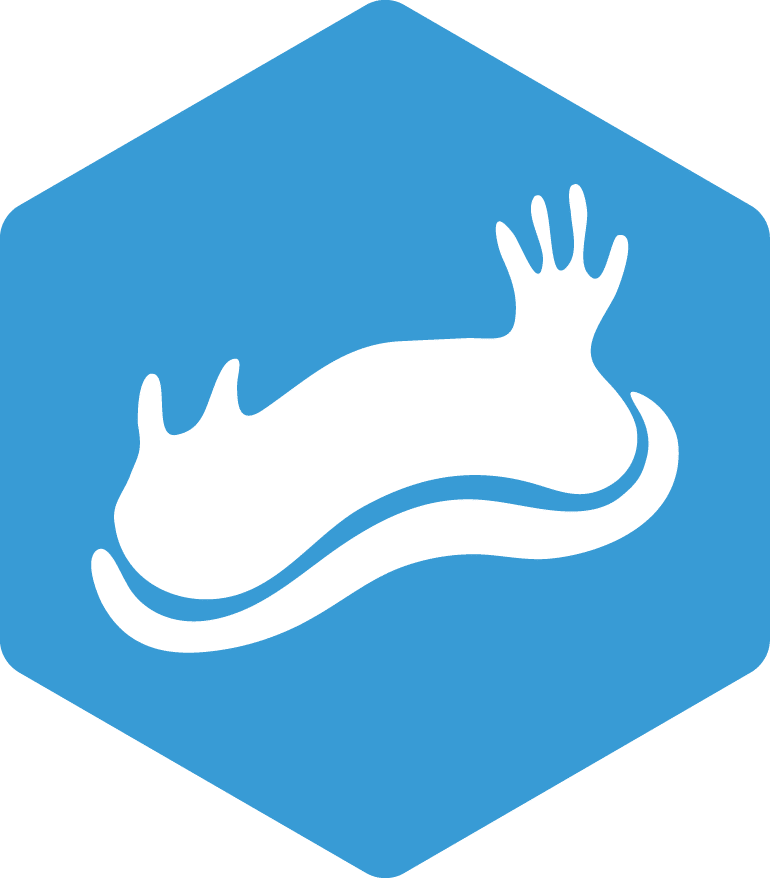
Nudibranchs, and other sea slugs, are a diverse and fascinating group of marine gastropods that have developed very colorful and ornate forms. Apart from being a favorite sighting by divers and photographers, their biodiversity is an indicator of total reef diversity, and also can be used when assessing changes in the physical or biological composition of marine areas in the face of disturbances. In our course you will learn about the ecology and taxonomy of sea slugs, and about how to conduct scientific surveys to monitor their abundance and diversity.
Prerequisites
- Be 12 years of age or older
- Be certified as an Advanced diver under a leading diving organization (PADI, SSI, RAID, etc) or an Open Water diver who has satisfactorily completed a buoyancy appraisal with a professional diver
- Demonstrate proper diving ability at an advanced level and be proficient in buoyancy and self-awareness
Standards
- Be able to differentiate between different families of sea slugs using anatomical features
- Learn various survey methods (endo-benthic, quadrat sampling, roving diver) used to survey for marine invertebrates in the muck.
- Be familiar with the hierarchical structure of taxonomy (phyla to species).
- Learn about the differences between morphological and molecular identification for marine invertebrates.
- Understand the ecological and economic role of sea slugs globally
Requirements
- Attend the nudibranch and sea slug lecture
- Complete the Sea Slug Quiz with a passing grade of at least 80%
- Attend at least 1 briefing involving procedures for diving in soft-sediment habitats (aka. muck habitat)
- Conduct at least 1 survey to observe and record sea slugs
- Complete identification of 2 different species (underwater or using photos) using online and library resources
Expected course time about 4 hours
Certification Card
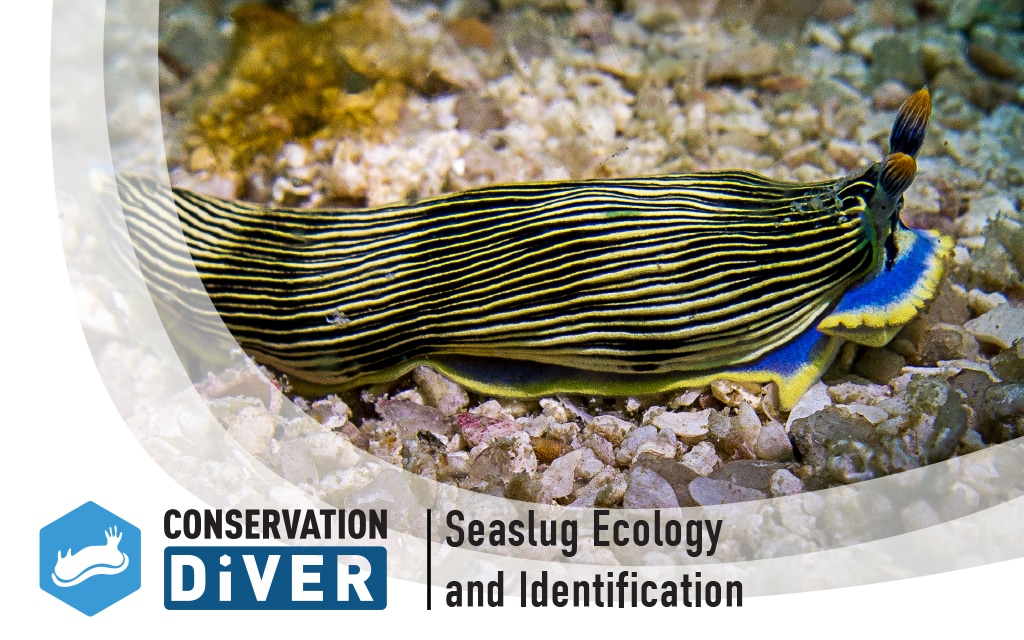
Training Centers
- Hawai'i - Ocean Alliance Project
- Indonesia – Blue Marlin Conservation
- Madagascar - MRCI
- Thailand – ATMEC
- Thailand – Black Turtle Conservation
- Thailand – NHRCP
Published papers and studies based on this course
Scientific papers
- A new species of coral-feeding nudibranch (Mollusca: Gastropoda) from the Gulf of Thailand. by Rahul Mehrotra, Spencer Arnold, Adam Wang, Suchana Chavanich, Bert W. Hoeksema & Manuel Caballer
- Selective consumption of sacoglossan sea slugs (Mollusca: Gastropoda) by scleractinian corals (Cnidaria: Anthozoa) by Rahul Mehrotra, Coline Monchanin, Chad M. Scott, Niphon Phongsuwan, Manuel Caballer Gutierrez, Suchana Chavanich, Bert W. Hoeksema
- The extraordinary genus Myja is not a tergipedid, but related to the Facelinidae s. str. with the addition of two new species from Japan (Mollusca, Nudibranchia) by Alexander Martynov, Rahul Mehrotra, Suchana Chavanich, Rie Nakano, Sho Kashio, Kennet Lundin, Bernard Picton and Tatiana Korshunova
- The formerly enigmatic Unidentiidae in the limelight again: a new species of the genus Unidentia from Thailand (Gastropoda: Nudibranchia) by Tatiana Korshunova, Rahul Mehrotra, Spencer Arnold, Kennet Lundin, Bernard Picton and Alexander Martynov
- On the genus Armina (Gastropoda: Heterobranchia: Nudibranchia) in Thailand by Rahul Mehrotra, Manuel Caballer Gutierrez and Suchana Chavanich
- Species inventory of sea slugs (Gastropoda: Heterobranchia) for Koh Tao, Thailand, with 25 first records for Thai waters by Rahul Mehrotra and Chad M. Scott
- Predation on a sacoglossan gastropod by a mushroom coral by Rahul Mehrotra, Chad M. Scott, Joel M. Rohrer and Bert W. Hoeksema
Articles
- A new species of coral-eating nudibranch
- Corals Have Evolved to Eat Sea Slugs
- The Koh Tao Team Makes a New Nudibranch Discovery
- A New species of Sea Slug – Found on Koh Tao
Related Resources
Shark Ecology & Population Studies
Shark Ecology & Population Studies
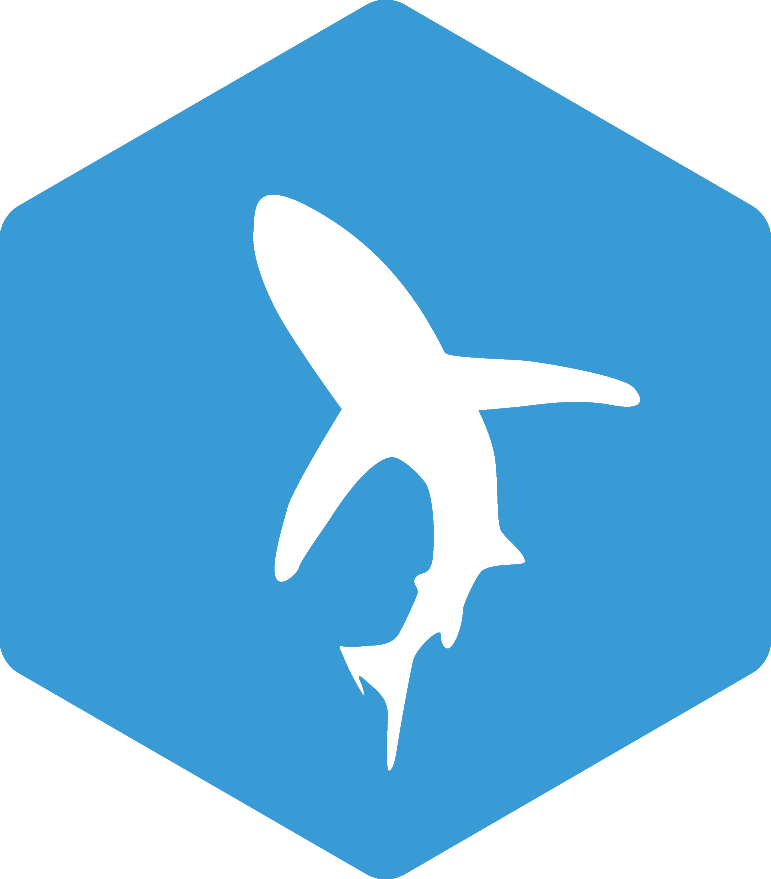
Sharks are one of the top predators of almost all marine environments; they have played a major role in driving the evolution of many of the other fishes and marine life. But today shark species around the globe are heavily threatened due to over-fishing. In this course you will learn more about the shark species of the world, as well as get the skills and practice monitoring shark populations and contributing to national and internal databases.



Prerequisites
- Be 12 years of age or older
- Be a competent swimmer if performing the course snorkelling
- Be certified as an Advanced diver under a leading diving organization (PADI, SSI, RAID, etc) or an Open Water diver who has satisfactorily completed a buoyancy appraisal with a professional diver
- Demonstrate proper diving ability at an advanced Level and be proficient in buoyancy and self-awareness
Standards
- Understand the importance of sharks in the marine ecosystem, global and local threats to shark populations, and shark identification.
- Learn how to survey for sharks and the various methods available to estimate abundance and diversity.
- Practice surveying for sharks while snorkeling or diving and record data on the sharks observed
- Know how to enter data into the Conservation Diver database and also partners such as SharkTrust.org and the eShark Project.
Requirements
- Attend 1 lecture on Shark Ecology and Population Studies
- Perform a dive OR snorkel to observe sharks
- Record data on shark observations
- Enter data into Conservation Diver and partner databases
Expected course time about 5 hours.
Certification Card
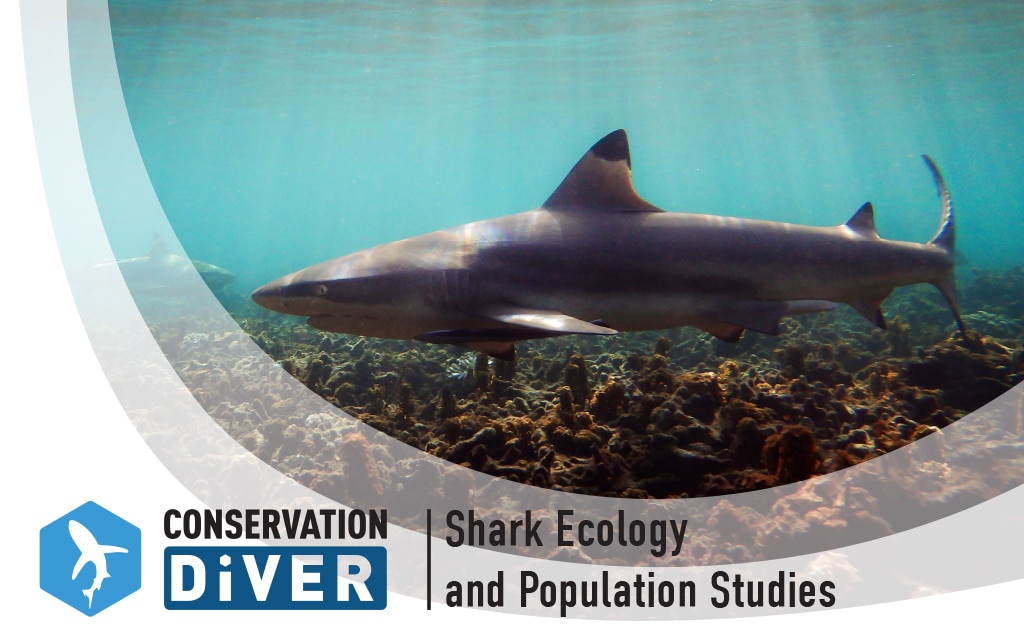
Training Centers
- Hawai'i - Ocean Alliance Project
- Indonesia – Blue Marlin Conservation
- Thailand – Black Turtle Conservation
- Thailand – NHRCP
Citizen Science Collaborators


Coral Spawning and Larval Culturing Program
Coral Spawning and Larval Culturing Programs for Reef Restoration

Coral Spawning and larvae culturing is a relatively new form of obtaining feedstock’s for reef restoration. Rather than using ‘donor’ colonies, which are usually sourced from the natural reefs, this technique uses coral eggs and sperm to create new coral colonies which are all genetic individuals. For years this technique has only been available to researchers and professionals with a high amount of knowledge, expertise, and funding. With our improved techniques however anybody can involve in these techniques, improving the genetic diversity of restored areas and increasing the resilience of corals reefs.
Prerequisites
- Be 12 years of age or older
- Be certified as an Advanced diver under a leading diving organization (PADI, SSI, RAID, etc) or an Open Water diver who has satisfactorily completed a buoyancy appraisal with a professional diver
- Demonstrate proper diving ability at an advanced Level and be proficient in buoyancy and self-awareness.
- Be certified in our Coral Restoration Theory & Techniques Course
Standards
- Understand the reproductive cycles of corals and their importance in maintaining diversity and renewing reef growth.
- Understand various modes and evolutionary stable strategies in coral reproduction, and their implications with reef threats and restoration.
- Learn how to track and predict coral spawning events.
- Learn how to capture coral larvae and eggs and fertilize them with a focus on maximizing genetic diversity.
- Learn how to culture and settle coral larvae using ex-situ husbandry.
- Learn how to maintain and troubleshoot the flow-through larvae rearing ponds.
Requirements
- Attend 3 lectures on coral spawning and larval capturing and culturing
- Perform 3 dives related to coral spawning activities (1) in-water histology and site preparation (2) Spawning observation and timing (3) Larval capture and fertilization
- Assist in the fertilization and rearing of coral larval
Minimum course length 12 hours
Certification Card
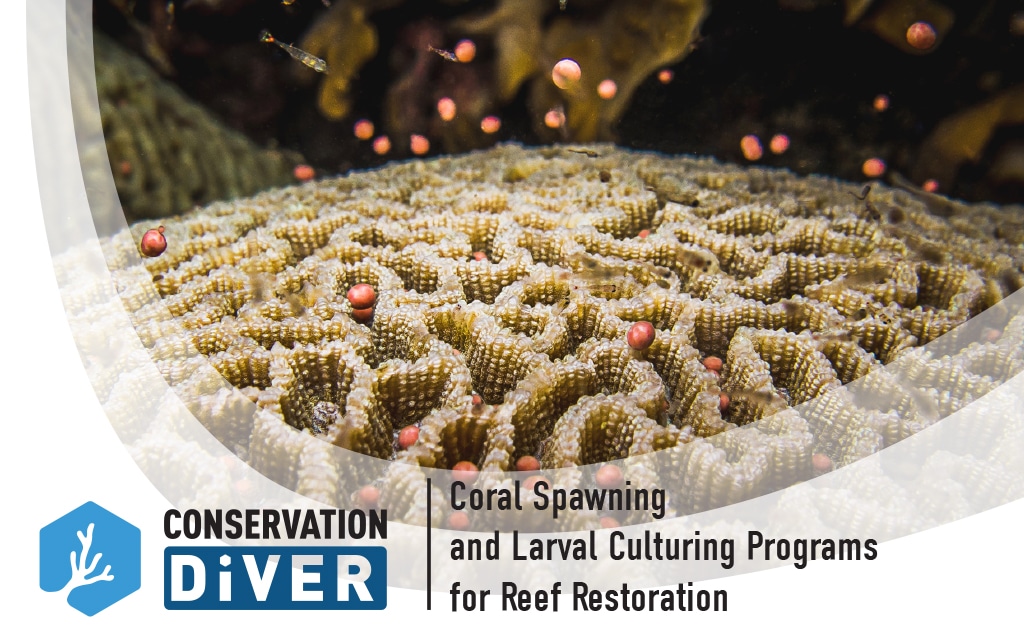
Training Centers
Published papers derived from this course:
- Developing community-accessible methods of increasing coral reef resilience through selective coral breeding programs (Chad M. Scott and James D. True)
- Community Based Strategies to Enhance Coral Reef Resilience and Recovery through Selective Coral Larval Culturing to Strengthen Population Genetic Fitness (Chad Scott, Prince of Songkla University)
- Culturing of coral spawn Analysis of the implementation of a scientific project into the community of Koh Tao, Thailand (Christoph Hoppe, Van Hall Larenstein)
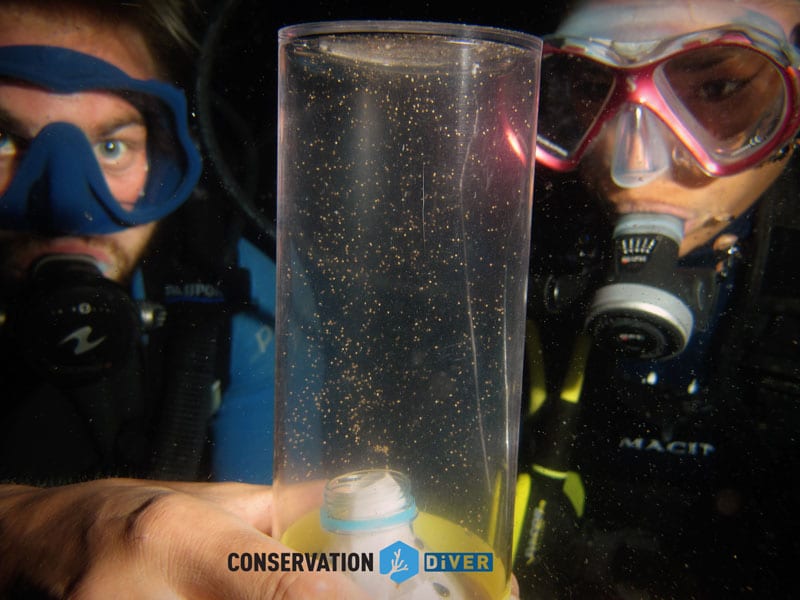
Sea Turtle Ecology and Head-starting Program

Sea Turtle Ecology and Head-starting certification program
All 7 species of sea turtle on the planet today are on the endangered species list, with populations of some reduced by 98%. Divers form a network that is integral in the identification and monitoring of sea turtle populations around the globe. Furthermore, in this course you will learn skills and techniques to feed and care for sea turtles in a nursery, rehabilitation program, or head-starting program.
Prerequisites
None (SCUBA diving section of the program is optional, and encouraged)
Standards
- Learn about the ecology, evolutionary history, threats, and identification of sea turtles
- Understand the basics behind sea turtle head-starting programs as well as the science and debate about such initiatives
- Attending briefing on the sea turtle nursery and understand how the system operates and how to troubleshoot the flow through system
- Know how to properly handle, care for, and feed sea turtles in nursery or rehabilitation programs
- Know how to monitor sea turtle growth and maintain the nursery
- Know how to perform the water quality check
Requirements
- Attend 1 lecture and 1 practical briefing
- Take data on sea turtle growth (weight and shell length)
- Perform cleaning, feeding, and maintenance activities
- Identify a sea turtle during a dive/snorkel and report the data to our database (Optional)
Expected course time about 2-5 hours (depending on if dive is completed or not)

